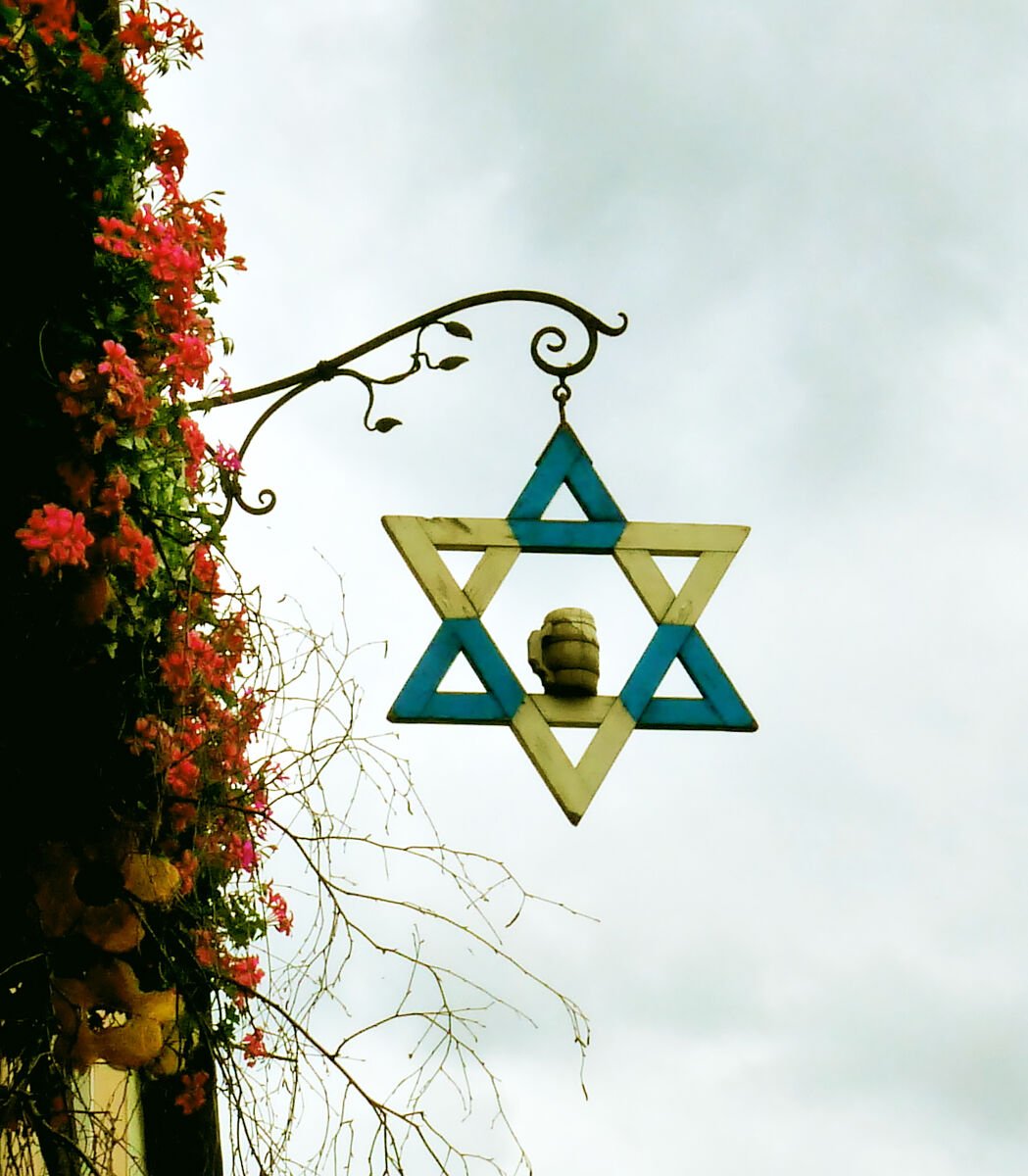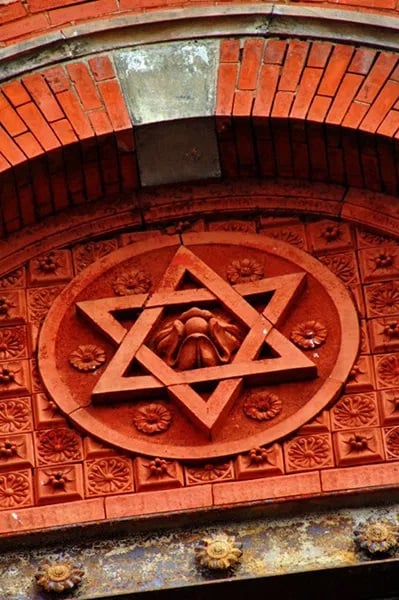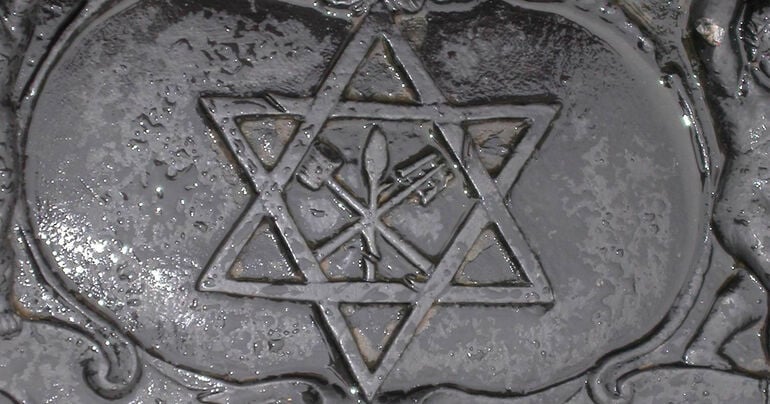Start 14-Day Trial Subscription
*No credit card required

What is the Brewer's Star?
Have you ever noticed a brewery proudly displaying a six-sided Brewer’s Star in their breweries or incorporating it into their branding? Other than Sixpoint Brewery, (whose star is actually not quite a Brewer's Star) the answer to that question is likely a resounding “no.”
You’d think a symbol as powerful and influential as the Brewer’s Star, the oldest international guild emblem of brewers and one with over 500 years’ worth of history attached to it, would be hard to resist – and yet – they do.
We’ll discuss why brewers aren’t quick to associate with this emblem in a minute, but first, let’s take a look at what the Brewer’s Star is and how it came to be.
The Brewer’s star was the official insignia of the Brewer's Guild as early as the 1500s, and its association with beer and brewing can be traced back even farther. Digging deeper into the past you’ll find that what is today a star didn’t start out that way. In about the 15th century, when alchemy – a medieval science and speculative philosophy that aimed to turn common elements into precious metals – was still a thing, and triangles were symbols that were strongly associated with it. One triangle, pointed skyward, symbolized fire; another triangle, pointed at the earth, symbolized water. Superimposed on one another, they achieved balance.
It also bears noting that the fire triangle, called the “blade,” correspondingly represented the masculine element of air, and the water triangle, called the “chalice,” represented the feminine element of the earth. Interestingly, this has been compared to the yin-yang symbol of Eastern alchemy, which also achieves harmony and balance, or the unity of opposites.

A pictorial representation of each point of the hexagonal Brewer's Star.
Throughout the millennia, this six-pointed star has had religious significance – though none with confirmed association with alchemy or brewing beer. This star forms a hexagram which is considered one of the most powerful symbols in occultism. Astrologers and sorcerers believed that the hexagram was created by a demon or witch called a Drude, and from this one could put a “hex” on someone.
On a more positive note, the hexagram was also thought to be a symbol of protection against fire and demons. In Medieval towns, where structures were built primarily of wood, the risk of fire in breweries was a constant; brewers who displayed this symbol were believed to be protected from such calamities.
To much of the world, this star is most widely known as the symbol of Judaism, commonly referred to as the Star of David or Solomon’s Seal. But the star is known to have pre-existed both David and Solomon and there is no biblical or historical evidence that links this secular symbol to King David. And, despite conjecture to the contrary, neither David nor Solomon were alchemists or brewers.
So that brings us back to the Middle Ages and the unique symbolism found in the Brewer’s Star. Referring back to its alchemist roots, we already know that fire, water, air and earth were represented within the star, and each was assigned its own point on the star. But that’s only four out of the six points. Eventually, after brewers co-opted the symbol, they incorporated the three ingredients needed to make beer – grain, hops and water – into their emblem (remember, this was long before yeast was identified as an ingredient).
Updated and simplified for the modern, scientific world, yeast replaced water on the ingredient triangle and water made earth the odd element out on the other. Today’s Brewer’s Star represents fire, air and water on one triangle, and grain, hops and yeast on the other – all the elements needed to make beer.

Today’s Brewer’s Star represents fire, air and water on one triangle, and grain, hops and yeast on the other – all the elements needed to make beer.
Though there is scant pictorial evidence from a century or more ago, it was conventional for brewers in Europe and America to brand or render a six-point star on the heads of their beer barrels and kegs. And, similarly, many brewers in the 19th and early 20th centuries created logos that incorporated the six-pointed star. The Brewer’s Star was also an adornment on many brewhouses built in previous centuries. The star was often a prominent and enduring fixture on the edifice exterior, proudly proclaiming the link to a rich brewing heritage.
In no other country is the Brewer’s Star better represented than in Germany. Alternately referred to as the Bierstern or the Brauerstern, this symbol can be seen throughout the Fatherland, most frequently in the southern state of Bavaria. Not unlike the Ale Stake and pub signs found in Britain, cantilevered inn signs in Germany commonly display a dangling Brewer’s Star.
The presence of these stars on the exteriors of the inns in Germany represented two things: 1) recognition of the right to brew beer and 2) a signal to thirsty travelers that fresh beer was on tap. Because the populace was mostly illiterate, the stars were often painted white or red, indicating that the available beer was either light or dark.
More to a point (pun intended), in the Northeastern Bavarian region of Oberpfalz, there are the twin cities of Windischeschenbach and Neuhaus an der Waldnaab, where the concept of communal brewing still exists. Small brewhouses operate as co-operative breweries; townsfolk take turns brewing beer in these facilities that is sold on premise. Known colloquially as Zoigl bier, it is heralded by the Zoigl Star that is hung outside the brewery to announce the tapping of each new beer.
So, with all this proud history, why have modern-day brewers abandoned this cherished emblem of brewing fraternity? Some speculate that it’s the visual connection to one of the world’s largest religions and the confusion that is likely to be caused by the shared symbol (for obvious reasons, this became an even greater issue during and after World War II). But the most likely reason that brewers no longer honor their heritage through revered symbolism is their innocent lack of exposure to it. They simply don’t seem to be aware of it, thus they have no appreciation of it or reverence for it.
I would encourage them to consider this: the Brewer’s Star seems to have been universally understood as symbolizing purity, and brewers who identify their occupation, their brewery and their brand with this respected symbol send an unambiguous message to both their colleagues and their customers: we brew quality beer!
If nothing else, at least their breweries will be protected from fires and demons…





Comments